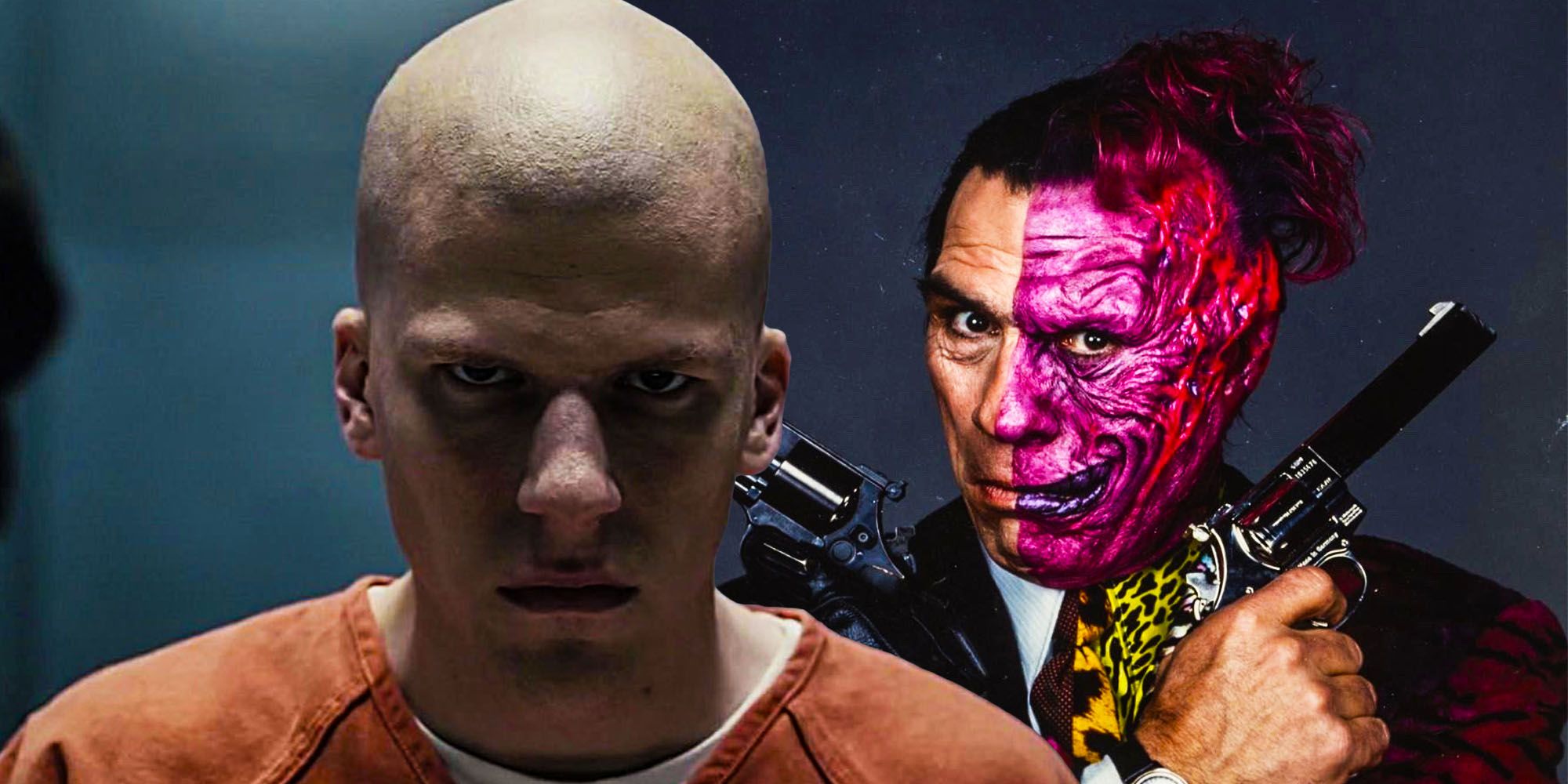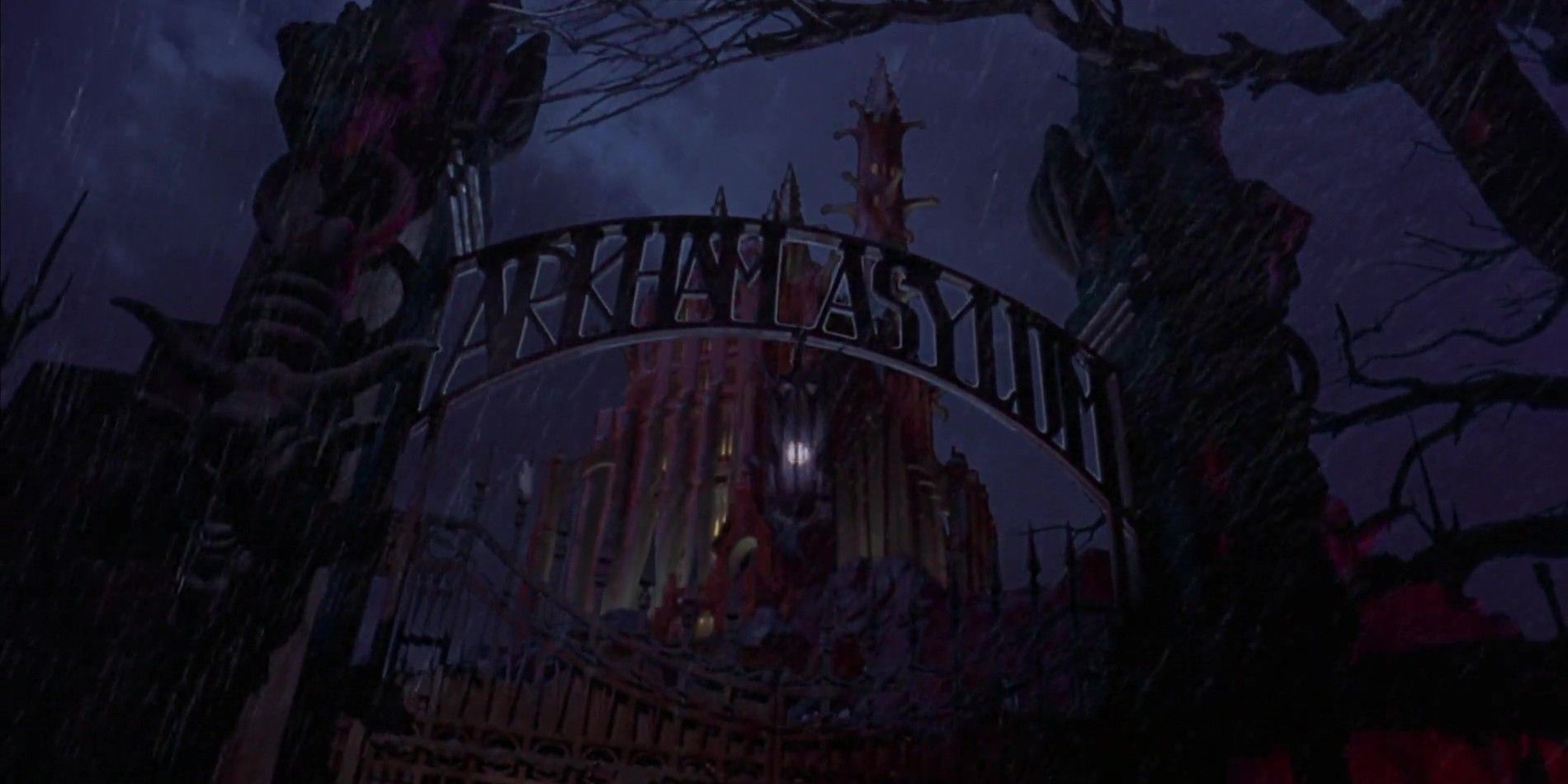
Lex Luthor (Jesse Eisenberg) made a cameo in Justice League, but his return copied a deleted Batman Forever scene. The DCEU’s superhero team-up film had a notoriously troubled production, with two contrasting visions eventually resulting in this year’s release of the fabled Snyder Cut. Despite heavy reshoots, Luthor appeared in both Zack Snyder and Joss Whedon’s versions, albeit each with a different stinger for future movies.
Making his debut in Batman v Superman: Dawn of Justice, Eisenberg’s Luthor was divisive for his floppy-haired, Mark Zuckerberg-like approach. The film ended with an imprisoned Luthor feigning insanity to avoid paying for his crimes, only for Batman (Ben Affleck) to have him transferred to Gotham City’s Arkham Asylum. Luthor reappeared at the end of Justice League, having somehow escaped and meeting assassin Slade Wilson/Deathstroke (Joe Manganiello) on his yacht.
Justice League provided a glimpse of a more traditional Luthor with a subdued performance from Eisenberg, but the film’s Arkham tease closely resembles a scene concerning Two-Face (Tommy Lee Jones), that was originally intended to open 1995’s Batman Forever. Joel Schumacher’s Batman films were criticized for their extremely campy tone, but the cut Arkham scene would have helped bridge the gap with Tim Burton’s darker, Gothic vision for Gotham. No live-action Batman film has properly explored Arkham, but Schumacher arguably presented the most captivating version.

Luthor’s offscreen breakout uses the same trick as Two-Face. In Justice League, an Arkham warden cautiously approaches Luthor’s cell, with the prisoner’s back turned to the camera. Once the warden enters the dark cell, he turns the man around to find it is actually a random inmate, cackling maniacally before the film then reveals Lex Luthor in a cliffhanger. In Batman Forever, Dr. Burton (René Auberjonois) enters Two-Face’s darkened cell and sees a silent, unmoving inmate. He puts his hand on the man’s shoulder, to discover a guard gagged and strapped in a straitjacket, rigged to the ceiling fan so the slightest touch pulls him into the air. The ceiling has been torn open and Two-Face left a message in what appears to be blood: “The bat must die.” Both scenes are unsettling, but the Two-Face fake-out holds greater impact and paints him as a more formidable threat from the outset. In contrast, Luthor’s ruse is a little too ambiguous. The laughing patient could hint at the Joker’s (Jared Leto) involvement, but it leaves several questions as to how Luthor managed to escape.
The plot beats are much the same, and so is the framing of Arkham employees walking down an imposing corridor, tension mounting as they approach the inmate shrouded in darkness. However, while Justice League offers a worthy take on Arkham, Schumacher deserves some credit for depicting the institute in a more horrifying light. Whereas Snyder’s hospital is unnerving but very clinical with a sickly green color palette, Schumacher delivers on presenting the asylum as a terrifying place nobody would want to go near. The gargoyles keeping watch over a monstrous metal gate battered by wind and rain seems ripped from the comics, with the hospital rising from the hilltops and surrounded by jagged, clawing trees. Schumacher’s vision for Arkham Asylum shows a truly haunting, Gothic estate that would have perfectly suited Tim Burton’s films. It’s the most visually striking Arkham from live-action, compared to Snyder and Christopher Nolan’s more grounded approach.
Batman Begins underused its somewhat uninspired institution, never seen again in the rest of Nolan’s trilogy. Likewise, Suicide Squad spent precious little time in the hospital, although David Ayer teased a longer assault on Arkham in his director’s cut. Justice League’s Luthor fake-out is the closest the DCEU has come to presenting an intimidating version of Arkham, but it is indebted to Batman Forever’s nightmarish deleted scene.
No comments:
Post a Comment